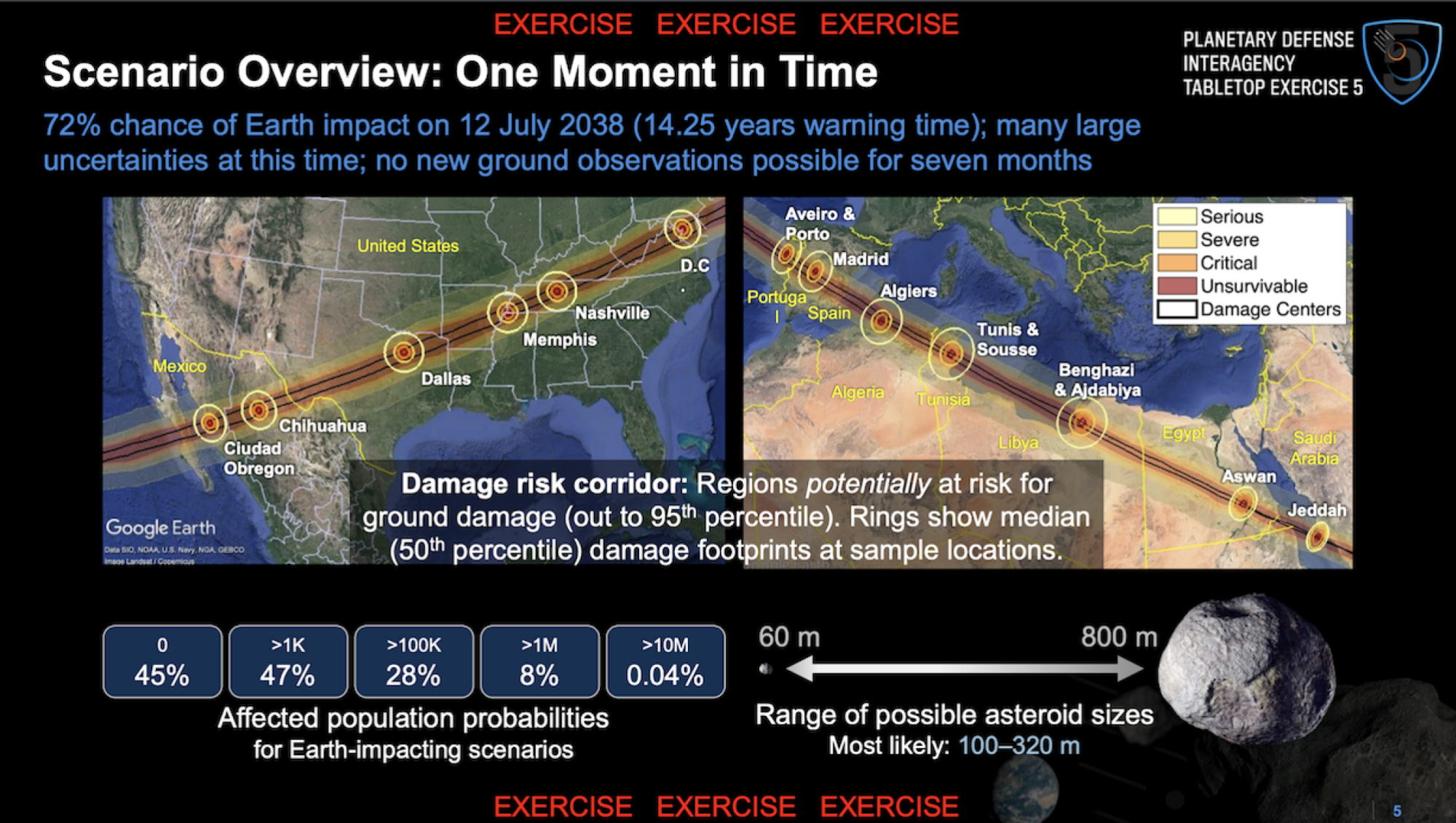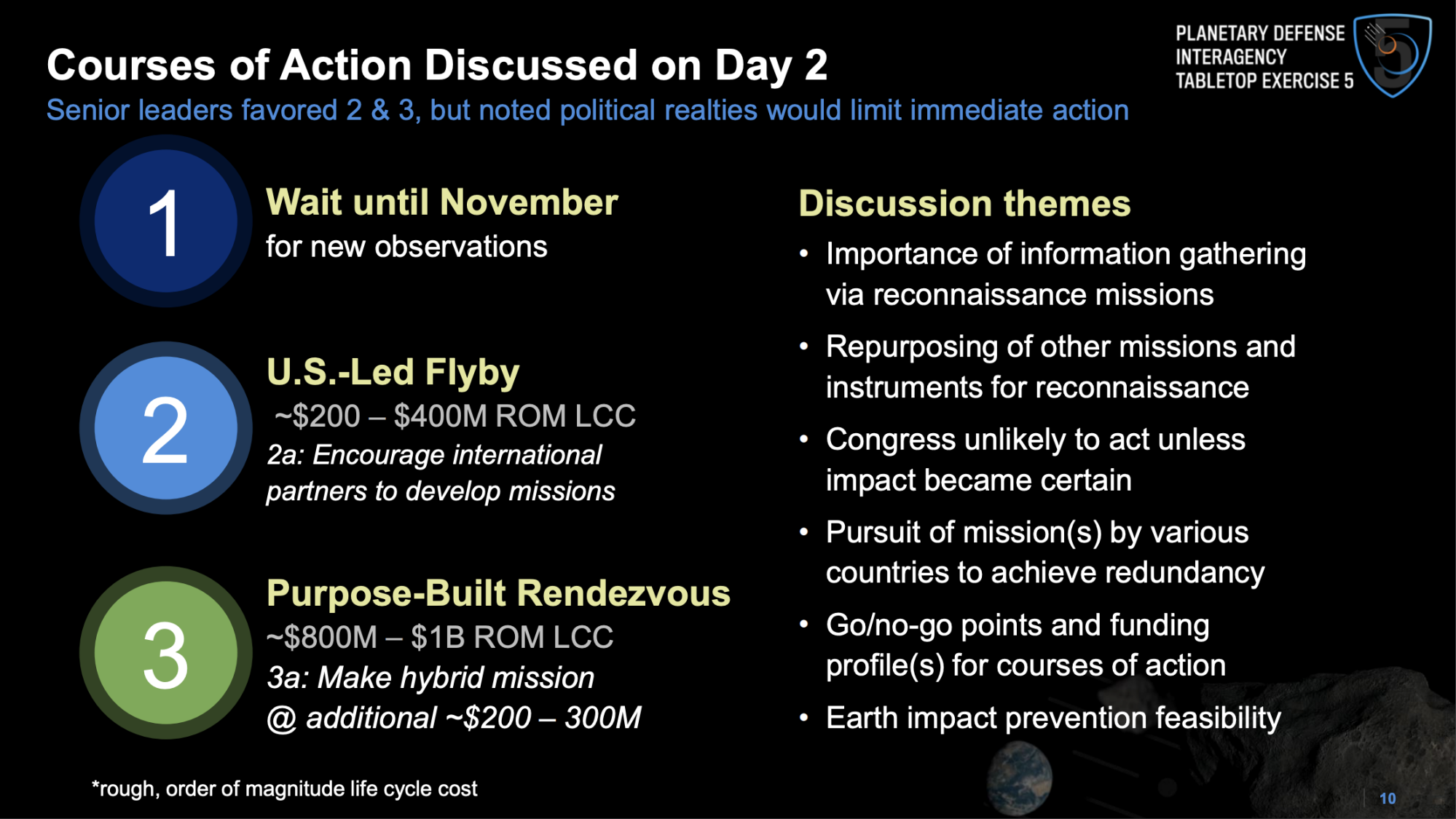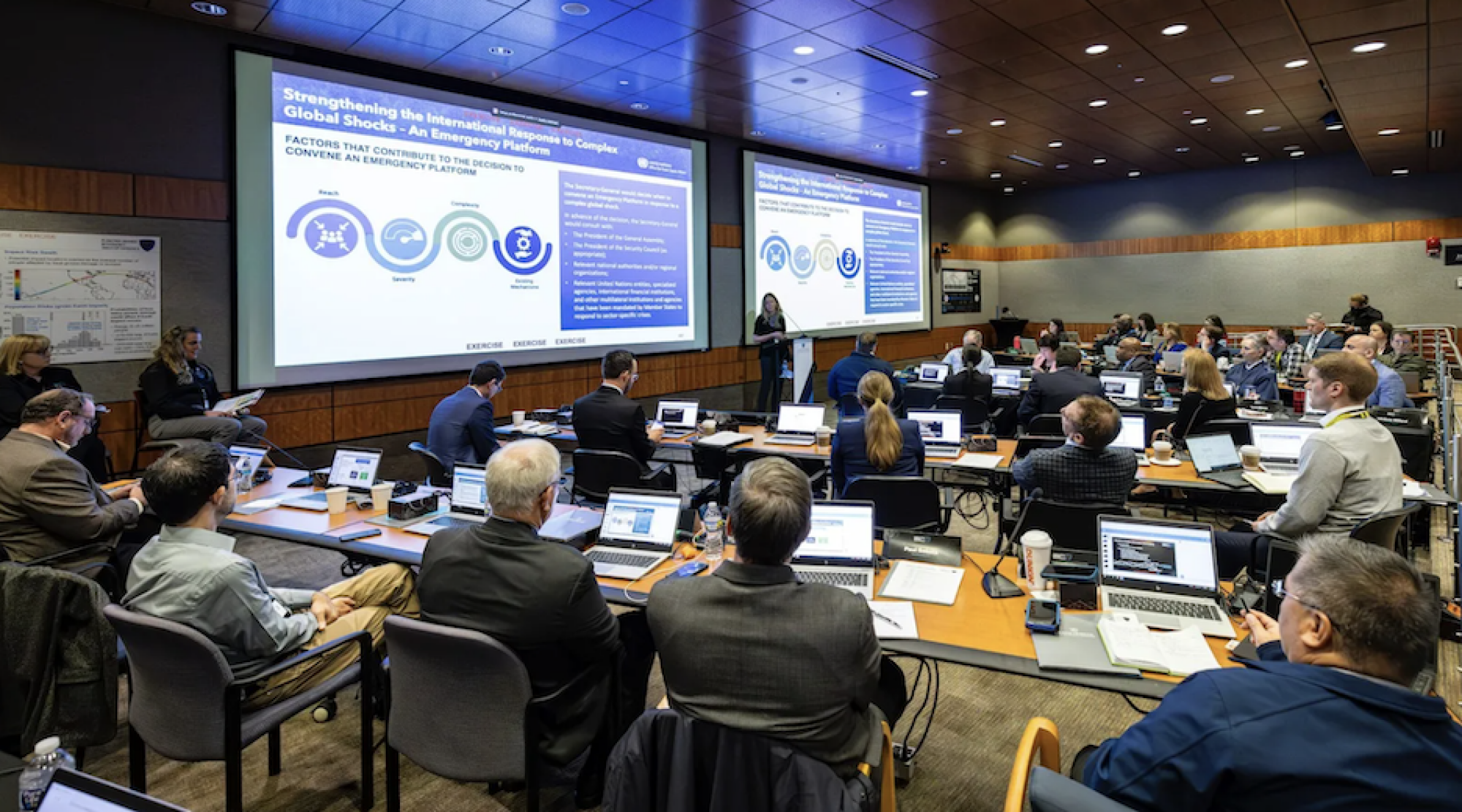What if, in 14 years, a newly-discovered asteroid was likely to strike Earth?
But that’s not all. This threatening space rock, some 330 to 1,050 feet in diameter (or 100 to 320 meters), has just disappeared behind the sun, making crucial observations impossible for the next seven months.
To prepare for such an unsettling scenario, NASA just completed an exercise to “inform and assess our ability as a nation to respond effectively to the threat of a potentially hazardous asteroid or comet.” A possible asteroid or comet collision can pose a number of uncertainties, which the space agency continued to test during the recent fifth Planetary Defense Interagency Tabletop Exercise.
“A large asteroid impact is potentially the only natural disaster humanity has the technology to predict years in advance and take action to prevent,” Lindley Johnson, NASA’s planetary defense officer emeritus, said in a statement.
Importantly, there are no known asteroids on a collision course with Earth for at least 100 years, and the chances of a major impact in our lifetimes is extremely small, astronomers say. Planetary defense agencies have never needed to raise an alarm about a threatening impact — though you’ve undoubtedly seen sensationalized news about menacing asteroids over the years.
“We have never actually issued a warning,” Johnson previously told Mashable. (But they have informed the public about what some asteroids of interest are doing.)
“We have never actually issued a warning.”
But, at some point, an impact is inevitable. “Yes, asteroids have hit Earth over the course of its history, and it will happen again,” NASA notes.
In the latest asteroid collision scenario, the space agency presented a hypothetical object some 330 to 1,050 feet across that has a 72 percent chance of walloping Earth. Something in that range, while not nearly the biggest class of asteroid, could be hugely destructive. Take the 600-foot-deep “Meteor Crater,” which landed in present-day Arizona 50,000 years ago. The culprit was likely some 100 to 170 feet across, but created a blast big enough to destroy Kansas City.
As the hypothetical trajectory below shows, this asteroid passes over some densely populated areas like Dallas, which would almost certainly create a national emergency, even if the exact trajectory is uncertain. The scenario’s impact is expected in 14 years, in July 2038, giving countries a relatively short time to prepare — especially with a seven month gap in surveillance. From initial observations, the object’s size, composition, and trajectory are uncertain.
“To complicate this year’s hypothetical scenario, essential follow-up observations would have to be delayed for at least seven months — a critical loss of time — as the asteroid passed behind the Sun as seen from Earth’s vantage point in space,” the space agency said.

Credit: NASA

Credit: Planetary Defense Interagency Tabletop Exercise
This latest planetary defense exercise underscores how critical near-Earth object surveillance is (these are objects that come within some 30 million miles of Earth’s orbit around the sun). Fourteen years is a rushed timeline.
“You need to know what’s coming, when it’s coming, and how hard it’s going to hit,” Eric Christensen, the director of the NEO-seeking Catalina Sky Survey in Arizona, previously told Mashable.
“You need to know what’s coming, when it’s coming, and how hard it’s going to hit.”
Among the courses of action discussed by NASA, FEMA, and other partners included a flyby of the incoming object, which would vastly improve our grasp of its composition, rotation, speed, and beyond. Will it break apart into smaller pieces in Earth’s atmosphere? Is it rubble-like, or solid? How likely is it to hit the ocean? Also discussed was the major operation, a “Purpose-Built Rendezvous,” which implies using a spacecraft to deflect an object.
Asteroid deflection is a realistic future possibility. In 2022, NASA plunged a refrigerator-sized spacecraft into a stadium-sized asteroid, with hopes of simply nudging it. It was an unprecedented, successful test — proving humanity could alter the path of a menacing asteroid, should one ever be headed our way. The impact cut the asteroid Dimorphos’ loop around its parent asteroid (they journey around the sun as a pair, or binary system) by a whopping 33 minutes and 15 seconds — when the original goal was to change it by at least 73 seconds.

Credit: NASA / JHU-APL / Ed Whitman
Ultimately, this latest tabletop impact exercise resulted in a number of “High-level Takeaways.” A glaring problem is the uncertainties involved in planning for a likely impact. The participants recommended developing “the capability to rapidly launch an NEO [near-Earth object] reconnaissance mission,” which could include repurposing existing spacecraft.
Thankfully, NASA and its planetary defense partners will continue exercising hypothetical asteroid threats. It behooves us to be prepared, even if the overall risk is low.
The risks of an asteroid impact
Here are today’s general risks from asteroids or comets both tiny, and very large. (Importantly, even relatively small rocks are still threatening, as the surprise 56-foot (17-meter) rock that exploded over Russia and blew out people’s windows in 2013, proved.
-
Every single day about 100 tons of dust and sand-sized particles fall through Earth’s atmosphere and promptly burn up.
-
Every year, on average, an “automobile-sized asteroid” plummets through our sky and explodes, explains NASA.
-
Impacts by objects around 460 feet in diameter occur every 10,000 to 20,000 years.
-
A “dinosaur-killing” impact from a rock perhaps a half-mile across or larger happens on 100-million-year timescales.
